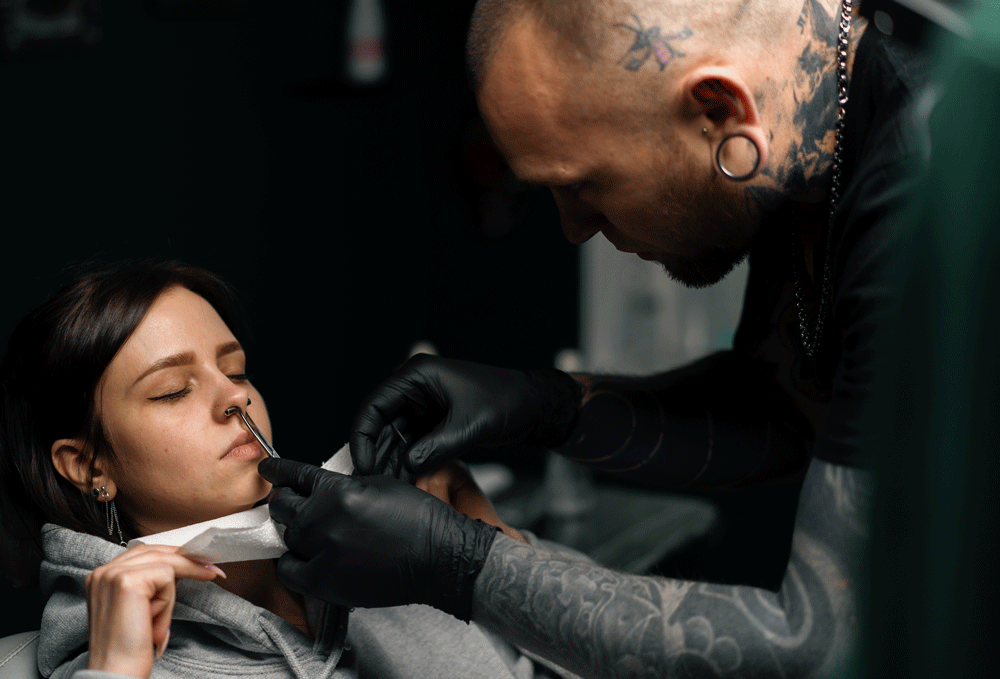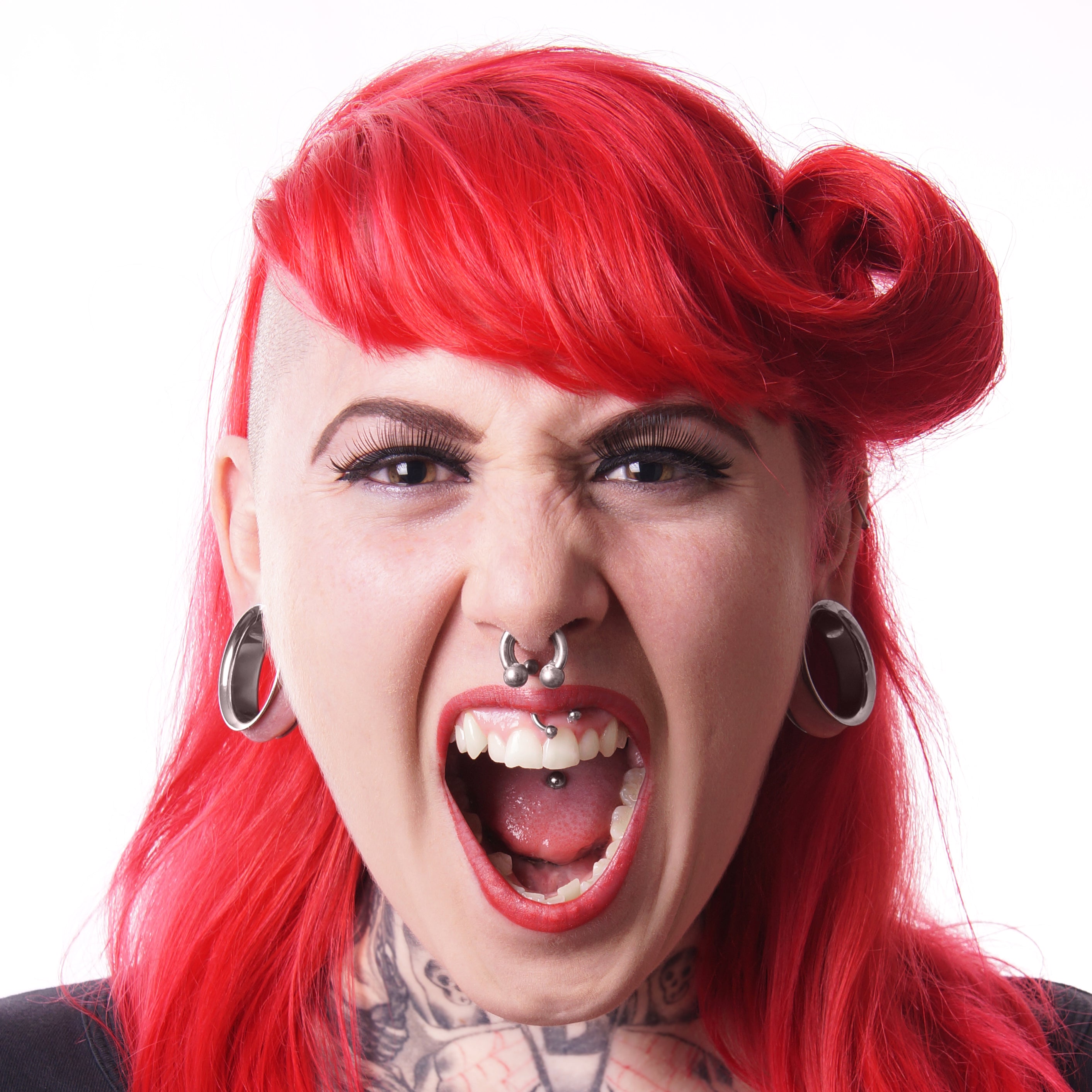When you get a new piercing, your piercer should give you a printed sheet afterwards detailing the aftercare requirements for it. However, stuff happens. Life is life. Sometimes we lose the paper, sometimes we get confused, and sometimes we accidentally leave that paper on the counter and walk out without it. Life stuff. So today we’re going to take a moment to discuss some aftercare recommendations. These are general tips and not necessarily a substitute for that piece of paper, so if you’re not sure…. call your piercer. Onward to the tips!

Part One - Basics
- Crusties – Crusties are the pieces of yellow crud that build up on your piercing. These are totally normal and to be expected. Do not try to manually pick them off. Let the shower do it for you or use a can of……
- Sterile Saline Wound Wash – This is the stuff you should be cleaning your piercings with. (Exception to this is inside of your mouth. Please do not spray this inside your mouth.) At BodyCandy we have our own sterile saline solution - check it out here. Do NOT use contact lens solution, antibacterial ointment, or anything harsh chemicals.
- If you do not have sterile saline on hand, you can use the running water in your shower and clean hands to keep your piercing clean while you are preparing to go get some sterile saline. Preparation is half the battle. You probably didn’t buy it before you got pierced but picking some up afterwards is vital. Your piercer probably sells it and as we mentioned, we have it too!

Part Two - Oral Piercings
- Oral hygiene is super important when you are healing a piercing. However, it is important to be gentle and not overdo it. Alcohol-based, antibacterial mouthwash would be overdoing it. It is important that you do not disrupt the delicate microbiome in your mouth. This can cause an oral infection called Thrush. If you have to mouthwash, twice a day with non-alcoholic mouthwash will do just fine. Otherwise, swish with (clean) water after you put anything in your mouth, at all. Food, drinks, cigarettes….and speaking of cigarettes….
- If you smoke or vape, you might consider giving it up for a time. Neither is good when you’re healing an oral piercing. You will heal more slowly, and it can irritate the piercing. If you can’t quit, make sure you swish after you are finished every single time.
- Food – You may wish to limit spicy, salty, and sour foods in the initial stages of healing. This should be reasonably obvious, in that such things are liable to hurt a bit. They may also irritate your piercing. Swelling is often very pronounced in oral piercings (looking at you, tongue….) so you may also wish to stick to softer foods for the first few days until the swelling comes down a bit. You may also wish to avoid foods that are a super-hot temperature during this phase. Don’t forget to swish afterwards!
- Don’t play with the jewelry. This is more of a reminder than a tip, as you already know this. Playing with the jewelry, as much as you may want to, will lead to a longer healing time and possible issues with your piercing.

Part Three - Surface Piercings
- Surface piercings are piercings that do not go through a discrete part of your body like an earlobe or nostril. They include piercings like eyebrow, navel, nasal bridge, and dermal implants. They are prone to rejection and need some extra love to be healthy. Dermals are generally considered to be “long term temporary” piercings because they almost always reject eventually. It’s not a given, just highly likely.
- Cleaning a surface piercing is the same as cleaning a standard piercing. Spray well with sterile saline, use clean hands, dry it with a hair dryer on the lowest setting or with a clean paper towel. (Do not use a cloth, the fibers can snag.)
- Do not let your topical products get in your piercing. This includes things like makeup, sunscreen, skincare products, body oils, or perfumes. Avoid the area of your piercing or simply do not use the product while you are healing if that is possible. Sunscreen can be impossible to avoid so just keep it away from your piercing.
- Please do not bandage your surface piercing. This actually invites bacteria due to the stickiness of the bandages and can cause unwanted tugging on the piercing. Tugging and unnecessary motion can also lead to the aforementioned rejection as well as migration. Migration is when your body, through the healing process and cell turnover, pushes the jewelry into a position where it may sit crookedly or move out of position. This, as well as rejection, can lead to some nasty scarring and should generally be watched for.
This is just a very basic primer on piercing aftercare. The exact directions for your piercing may vary depending on the type and location. Remember, when in doubt – consult your trusted piercer! Happy piercing!






